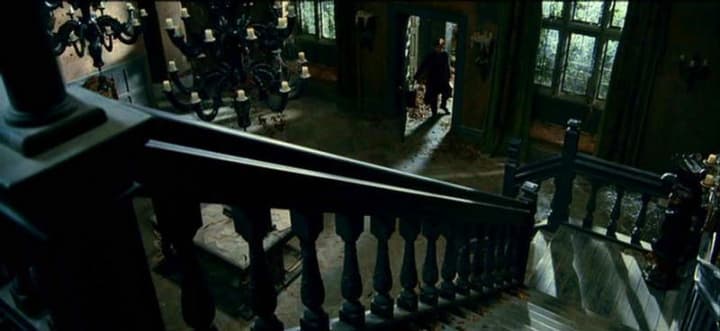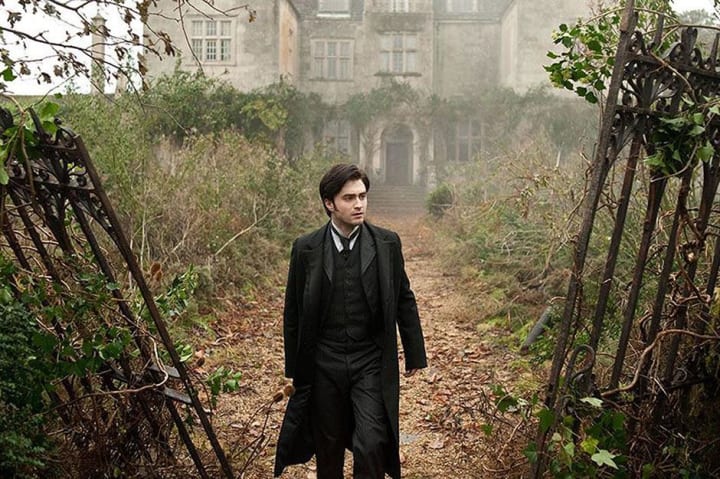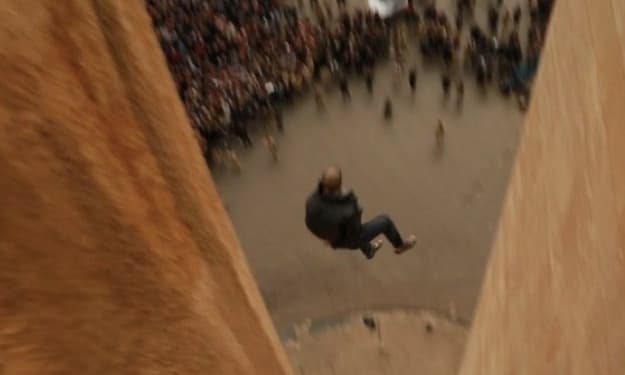NEW DRAFT - How The Woman In Black Film Should Be a Christmas Story
When a modern book shows Jamesian and Gothic quality.

The Original Book and Its Author Susan Hill
In 1983 The Woman in Black: A Ghost Story was published under Hamish Hamilton and authored by Susan Hill. This was a product of Susan's writing mid-career as her first novel, The Enclosure was published in 1961 at the age of sixteen years old.
Many of Susan's publicized works focused on the dissection of humanity and the interpersonal relationships of one character to another. She veers from character study development into the suspenseful of her third book Gentleman and Ladies (1968) regarding suspicion and fear during the arrival of a stranger to a small town after the death of someone they knew but knew nothing of this deceased persons life with the stranger who has appeared.

Susan Hill continued to write newly published works and even after the Hollywood release in 2012 of "The Woman In Black" film she decided to wade into the world again once more by publishing a sequel book The Woman in Black: Angel of Death in 2013. This book was also made into a Hollywood film and was released in 2014.
Is the story Jamesian or Gothic?

The book holds many signs that it befits M.R. James story-telling mechanics more than gothic horror. You see, many people argue that The Woman in Black is a gothic horror. In order to satisfy those traits, a gothic horror may contain have the following:
- Gloomy decayed location
- Supernatural being (Ghost/Vampire/giants etc)
- Prophecy or a curse
- A clear hero
- Damsel in distress to be saved
- Romantic outlook
- Over-heightened emotions
These are traits associated with classics like The Vampyre by Lord Byron (later derived from to create Dracula for Bram Stoker), Frankenstein by Mary Shelley, and select works from Edgar Allen Poe.

But "Jamesian" literature lends to its own subgenre in the same fashion "Lovecraftian" does. Yes, they both embody many things that qualify for "gothic" but have a very niche need.
Lovecraft circles into not only monsters traditionally told in many countries, but a hard look at how we are small in comparison to universal powers older than any God humankind has ever reached to understand with a language that is lost to eons of time and the closest we will ever get to pronouncing it is "Cthulhu".

Jamesian derives from a collection of works from the 1800's author who has a general set of his own storytelling rules.
- Setting in a seaside, country estate, small village, abbey or university. Often in a European setting such as England, France, Denmark, or Sweeden.
- A simple protagonist. A man not special in many attributes who is often naive and reserved.
- Discovery of old antiquity or object that begins to unlock pandora's box and bring down its wroth on the situation. Usually beyond the grave.
- The story is easy to be empathetic as in it's based in a sense of realism that this is a plausible situation for an average person and if the reader isn't careful it will happen to them.
The main character Arthur Kipps is an unremarkable accountant who is tasked with documenting any important papers left around the estate of Eel Marsh house after its owner, Mrs. Drablow, has passed.

Taking place in a small village, near the sea. An over-reaching prophecy from the grave is expressed by the townspeople by anyone who see's the woman in black. There is no one to romance and save, at least not until it is far too late at the end, and the home of Eel Marsh house was actually kept in very good condition as a handsome estate.
While the book does not focus on a single "catalyst" that provokes the woman in black to haunt our main character, his presence and investigation certainly stir up the concern of the townspeople. That when they witness the woman in black, children die in an accident. However, I think it would be best to go over the differences of the book and the film for a start.

Differences Between the Book and the 2012 Film
The film does a "Hollywood" dress up on what they believe audiences expect when they pay fare to go see a horror film. There need to be jump scares, some music that enhances a metallic strike, or a disfigured face. Don't get me wrong, there are reasons why those items sell so well at a movie theater ticket booth. I enjoy films like that myself.
Attributes Unique To The Film:
- Arthur Kipps is a single dad with a son. His wife died in childbirth.
- When the woman in black reveals herself to the children, they become entranced/possessed to kill themselves.
- The town becomes mob-like over the fear of anyone approaching Eel Marsh house.
- Arthur Kipps experiences hauntings and echoes of the past into the present.
- Arthur Kipps is haunted by the damned souls of the children she's ensnared.
- Samuel Daily's wife has gone mad with acting like their dogs are replacement children.
- Arthur sees the woman in black while waiting for his son to visit him, this causes the son to become entranced and walk onto the train tracks. Arthur Kipps goes after him, killing them both to be reunited with his dead wife.

Attributes of the Book That Contradict It:
- Arthur Kipps starts out as an old Man with his SECOND family on Christmas Eve. They ask him to tell a ghost story per the family Christmas tradition.
- Arthur Kipps is a naive young man with a finacé, no children yet.
- The town is welcoming of Arthur Kipps until he tries to bring up the subject of Mrs.Drablow and they go quiet on him.
- His first sighting of the woman in black is at Mrs. Drablows funeral inside the church.
- No Children die during his stay at Eel Marsh house in the village making him believe that he's laid her soul to rest after discovering her secret tragedy.
- The only child who dies in the book is Arthur Kipps' young boy, years after encountering Eel Marsh house during a grounds fair outside London.
- No haunting children come back to intimidate Arthur Kipps.

What, if anything says Christmas about this story?
It would be good to note that one of the most internationally beloved and echoed Christmas stories would be that of Charles Dickens "Christmas Carol" of which on the title page shows "In Prose: A Ghost story of Christmas". Christmas and ghosts have been constant companions of one another for centuries. Even before a Christmas Carol was published.
And while the Christmas Carol book's central themes are meant to show the spirit of Christmas directly, it also delves into the supernatural in order to achieve it.

In fact, there are several passages that are fairly terrifying if taken at face value. When Scrooge snuffs out the light of the Ghost of Christmas Past dousing her out, or Ghost of Christmas Day holding beneath his robes the horrific twisted and starved children-like creatures named "ignorance" and "want". Even The Ghost of Christmas Future is a representation of a classic grim reaper.

In fact, it's been a very OLD English tradition to tell ghost stories on Christmas Eve. There isn't a clear alignment of when this started, although some people suspect that it has carryovers from the pagan winter solstice traditions. Different cultures like Iranian, Celtic, and Germanic traditions demonstrate other stories that say this world and the next have a thinner veil around that time of year.
The start of The Woman in Black book begins on Christmas Eve in its very first chapter. In which his children beg their elderly father, Arthur Kipps, to tell a ghost story with the rest of the family.
He recollects the only story he knows from experience and overcome by sadness, he walks out the front door to the snow and cold. He begins to recollect the story aloud to the reader as though we are looking into a window to his thoughts.

Arthur was a younger man, with ambition, a promising fiancé, and did not heed any of the tension and warnings of Eel Marsh House from the locals. The book centers around gratitude, family, and trauma that can arise from the dead. It is a closer examination of the human spirit when we take ghost stories for granted.
That celebration of love and simple expression of kindness may not be enough if it ignores the anguish of real heartbreak, even during a holiday season. Christmas celebrations can honor those who experience a darker side of what they may be having in grief, instead of only focusing on light festivities.
About the Creator
Fiona Percival
Exploring so many facets of life from horror, to project organization, higher vibrations, and ways we can connect as a humanity.
Enjoyed the story? Support the Creator.
Subscribe for free to receive all their stories in your feed. You could also pledge your support or give them a one-off tip, letting them know you appreciate their work.






Comments
There are no comments for this story
Be the first to respond and start the conversation.